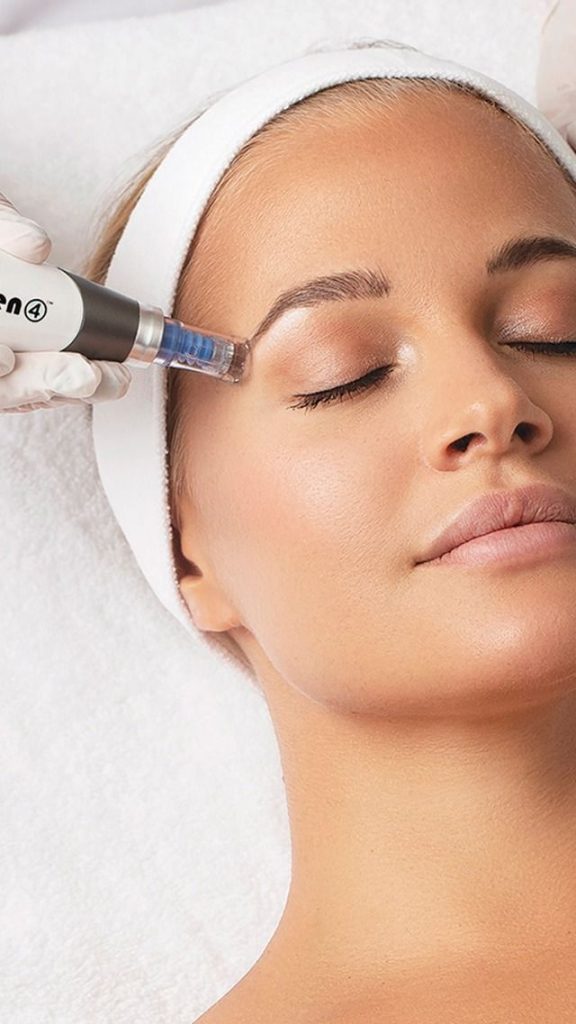Undergoing a Dermapen microneedling treatment is an excellent step towards achieving healthier, more rejuvenated skin. While the procedure itself triggers the body’s natural healing processes to stimulate collagen and elastin, the success and speed of your recovery largely depend on diligent and appropriate aftercare. Proper post-treatment care is crucial for minimizing side effects, preventing complications, and ensuring you achieve the best possible results. Neglecting aftercare can prolong downtime and even compromise the benefits of your dermapen session.
The Importance of Post-Treatment Care
Dermapen creates thousands of microscopic channels in your skin, making it temporarily vulnerable. The skin’s natural barrier is compromised, increasing its susceptibility to irritation, infection, and environmental damage. Effective aftercare aims to:
- Accelerate Healing: Support the skin’s innate repair mechanisms.
- Reduce Inflammation: Minimize redness, swelling, and discomfort.
- Prevent Complications: Guard against infection, post-inflammatory hyperpigmentation (PIH), or scarring.
- Optimize Results: Ensure the skin heals optimally to reveal the desired improvements in texture, tone, and firmness.
- Maintain Barrier Integrity: Rebuild and strengthen the skin’s protective barrier.
Essential Aftercare Tips for Faster Recovery
Adhering to these guidelines will help ensure a smooth and speedy recovery after your Dermapen treatment:
1. Strict Sun Protection (Non-Negotiable)
- Why it’s crucial: Treated skin is extremely sensitive to UV radiation. Sun exposure can lead to severe PIH, burns, and undo the benefits of the treatment.
- Action: For at least 1-2 weeks post-treatment, avoid direct sun exposure as much as possible. Apply a broad-spectrum mineral sunscreen (containing zinc oxide or titanium dioxide) with SPF 30+ or higher daily, even indoors or on cloudy days. Reapply every 2-3 hours if outdoors. Wear wide-brimmed hats and seek shade.
2. Gentle Cleansing Only
- Why it’s crucial: Harsh cleansers can strip the skin’s natural oils and compromise the healing barrier, leading to irritation.
- Action: For the first 24-48 hours, cleanse with only lukewarm water and a very mild, pH-balanced cleanser recommended by your practitioner. Gently pat your skin dry with a clean, soft towel. Avoid scrubbing, rubbing, or using washcloths.
3. Consistent Hydration and Moisturization
- Why it’s crucial: Treated skin will likely feel dry and tight as it heals. Proper hydration supports the skin barrier and aids in the regeneration process.
- Action: Apply a rich, soothing, non-comedogenic moisturizer frequently throughout the day, as advised by your practitioner. Look for products containing ingredients like hyaluronic acid, ceramides, squalane, or growth factors, which aid in repair and hydration.
4. Avoid Active Ingredients and Exfoliants
- Why it’s crucial: Using strong active ingredients too soon can cause severe irritation, inflammation, and damage to healing skin, potentially leading to adverse reactions.
- Action: Steer clear of retinoids (retinol, tretinoin), AHAs (glycolic, lactic acids), BHAs (salicylic acid), Vitamin C, and other exfoliating or highly active serums for at least 3-7 days, or as long as your practitioner recommends. Introduce them back slowly once your skin has fully healed.
5. Hands Off Your Face!
- Why it’s crucial: Picking, scratching, or peeling any flaking skin can introduce bacteria, lead to infection, cause scarring, and result in PIH.
- Action: Resist the urge to touch your face unnecessarily. Let any peeling or crusting resolve naturally. Ensure your hands are clean if you need to apply products.
6. Avoid Strenuous Activities and Heat
- Why it’s crucial: Excessive sweating, heat, and friction can irritate newly treated skin and increase the risk of infection.
- Action: For at least 24-48 hours post-treatment, avoid strenuous exercise, saunas, steam rooms, hot tubs, and very hot showers.
7. Postpone Makeup Application
- Why it’s crucial: Makeup, especially heavy foundations, can clog the newly opened micro-channels and potentially introduce bacteria, leading to breakouts or infection.
- Action: Avoid applying makeup for at least 24 hours after your treatment. If you must use makeup, opt for mineral-based, non-comedogenic formulas and ensure your brushes are clean.
Conclusion
Dermapen treatment aftercare is a critical component of achieving optimal results and ensuring a swift, complication-free recovery. By diligently following these tips – prioritizing sun protection, gentle cleansing and hydration, avoiding harsh actives, and allowing your skin to heal undisturbed – you can significantly enhance your skin’s regenerative process. This commitment to post-treatment care will not only minimize downtime but also maximize the transformative benefits of your Dermapen session, revealing a healthier, more radiant complexion.

